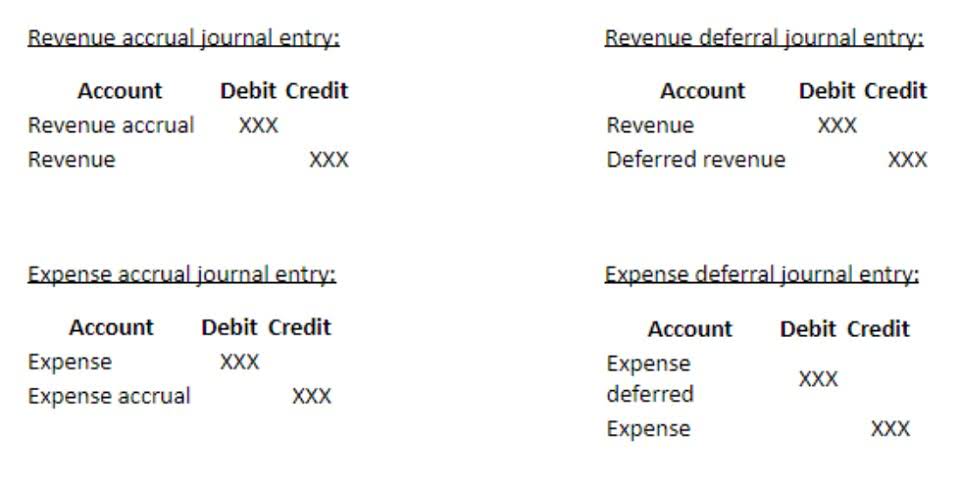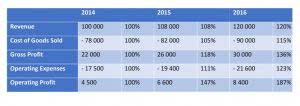
When amortizing prepaid expenses, companies must debit the expense account and credit the prepaid expense account. Journal entries must be recorded accurately to ensure that the accounting books are correct. As a financial journal entry for prepaid insurance consultant or business owner, it is critical to understand prepaid expenses and how to account for them. A prepaid expense is a payment made in advance for goods or services that will be received in the future.
Adjusting Entries Outline
- Any expense that is considered prepaid must be recorded as a current asset on the balance sheet and then gradually expensed over the period to which they relate.
- The amount of the insurance premiums that remain prepaid at the end of each accounting period are reported in the current asset account, Prepaid Insurance.
- In this article, we will delve further into how to appropriately account for prepaid expenses and their impact on the financial statements as well as decision-making.
- Instead, follow this simple guide to recording prepaid expenses to keep your accounting records accurate.
- Misclassifying prepaid expenses as immediate costs can lead to understating your business’s assets and overstating your outgoings, which can skew financial reports and negatively impact business decision-making.
Most calculations dealing with prepaid insurance involve determining how much of that prepaid insurance expense is recognized in each accounting period. This is usually done by dividing the total premium paid by the coverage period, which may be expressed in months or years. As the prepaid amount expires, the balance in Prepaid Insurance is reduced by a credit to Prepaid Insurance and a debit to Insurance Expense. This is done with an adjusting entry at the end of each accounting period (e.g. monthly).
- When you buy the insurance, debit the Prepaid Expense account to show an increase in assets.
- In this article, we will be discussing the prepaid insurance journal entry with some examples.
- Prepayments are for goods or services received and used but for which the invoice is not yet due.
- The balance will be reversed from prepaid insurance to expense on the income statement.
- While the insurance used for December ($100) will be reported on December’s income statement as an Insurance Expense.
- The balance in the asset Supplies at the end of the accounting year will carry over to the next accounting year.
Accounting for Prepaid Expenses

The balance in Insurance Expense starts with a zero balance each year and increases during the year as the account is debited. The balance at the end of the accounting year in the asset Prepaid Insurance will carry over to the next accounting year. This journal entry is completed to establish your Prepaid Insurance asset account that represents the prepaid amount. Remember, to track prepaid expenses properly, they need to be recorded in your general ledger as a prepaid expense asset, with a portion of the prepaid asset accounted for each month as an expense. Accurately accounting for business transactions, including prepaid expenses, is essential for ensuring accurate financial statements. At this point, recording a summarized scope of them as a single journal entry can sometimes be better than per transaction entries.

Handling prepaid expense entries: key takeaways
The correct balance should be the cumulative amount of depreciation from the time that the equipment was acquired through the date of the balance sheet. A review indicates that as of December 31 the accumulated amount of depreciation should be $9,000. Therefore the account Accumulated Depreciation – Equipment will need to have an ending balance of $9,000. The income statement account that is pertinent to this adjusting entry and which will be debited for $1,500 is Depreciation Expense – Equipment. Instead, follow this simple guide to recording prepaid expenses to keep your accounting records accurate.

- Accrual accounting adheres to the matching principle which requires recognizing revenue and expenses in the period they occur.
- At Finance Strategists, we partner with financial experts to ensure the accuracy of our financial content.
- Prepaid insurance is commonly recorded, because insurance providers prefer to bill insurance in advance.
- If you use cash-basis accounting, you only record transactions when money physically changes hands.
- Instead, they provide value over time—generally over multiple accounting periods.
Doing so ensures that your financial statements reflect your company’s true financial situation, something current and potential investors will want to confirm is the case. Here’s why it’s important to get a better handle on prepaid expenses and how they are used. A prepaid expense is any business expenditure that you pay for in advance of that expense being incurred.
Not adjusting prepaid expenses at the end of the accounting period

If you use cash-basis accounting, you only record transactions when money physically changes hands. Instead, they provide value over time—generally https://www.bookstime.com/articles/bookkeeping-for-large-business over multiple accounting periods. Because the expense expires as you use it, you can’t expense the entire value of the item immediately.
As the prepaid expense is used, it is gradually recognized as an expense by debiting the appropriate expense account and crediting the prepaid expense account. Prepaid insurance is usually considered a current asset, as it becomes converted to cash or used within a fairly short time. But if a prepaid expense is not consumed within the year after payment, it becomes a long-term asset, which is not a very common occurrence. The payment of the insurance expense is similar to money in the bank—as that money is used up, it is withdrawn from the account in each month or accounting period. When a company pays its insurance payments in advance, it makes a debit entry to its prepaid insurance asset account. As the coverage term progresses and sections of the prepaid insurance are expensed, the prepaid insurance account is credited to reflect the decrease in the prepaid amount.
This final entry will close out your Prepaid Insurance balance to $0, while your Insurance Expense for the year will be $12,000. By summarizing transactions into a single entry, businesses can quickly see the total amount of expenses or revenue for a particular account. This makes it easier to identify trends and patterns in financial data and make informed decisions based on that information. Suppose that Smith Company, which has a yearly accounting period ending on 31 December, purchases a two-year comprehensive insurance policy for $2,400 on 1 April 2019.
